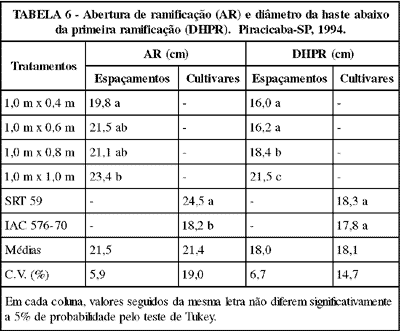An experiment was carried out in order to evaluate the vegetative and productive behavior of three cultivars of cassava (Manihot esculenta Crantz) related to the above ground architecture, in four planting spacings. The research was carried out in Piracicaba, State of São Paulo, Brazil from October 1993 to July 1994, on a Rhodic Kandindox soil. The treatments constituted of cultivars SRT 59 (Branca de Santa Catarina), IAC 576-70 and IAC 1287 (Fibra), described as low and open-angle branching, high and close-angle branching and no or late branching, respectively. Each treatment had three subtreatments of planting spacings: 1.0 m x 1.0 m; 1.0 m x 0.8 m, 1.0 m x 0.6 m and 1.0 m x 0.4 m, arranged in randomized blocks with subdivided plots and four replications. Each subplot was constituted of 4 lines with 10 plants each. Evaluations were performed on the 16 central plants of each subplot. The branching cultivars and the smallest planting spacings favored canopy closure. Smaller the planting spacings closer the branching angle and smaller the diameter of the primary stems for the branching cultivars the smaller the planting spaces the higher the root yield for the no branching cultivars.
Manihot esculenta; cultivars; branching







